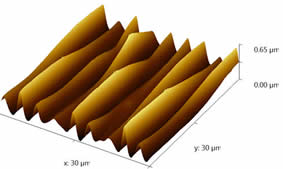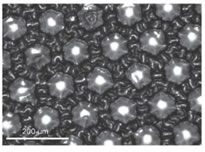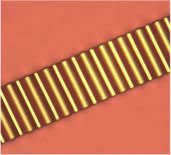 Upon the development of a critical stress, many materials and geometries experience a mechanical instability, which produces significant changes in geometry with small changes in stress. In nature, mechanical instabilities are ubiquitous with well-defined shapes, morphologies, and functions. For instance, in the emergence of mountains and valleys and at a smaller scale such as fingerprint formation and the snapping of the Venus Flytrap. Inspired by these examples, we are interested in understanding the parameters that influence the evolution of buckled structures and take advantage of their morphologies to control the function of soft polymer surfaces.
Upon the development of a critical stress, many materials and geometries experience a mechanical instability, which produces significant changes in geometry with small changes in stress. In nature, mechanical instabilities are ubiquitous with well-defined shapes, morphologies, and functions. For instance, in the emergence of mountains and valleys and at a smaller scale such as fingerprint formation and the snapping of the Venus Flytrap. Inspired by these examples, we are interested in understanding the parameters that influence the evolution of buckled structures and take advantage of their morphologies to control the function of soft polymer surfaces. 
Studying the mechanics of wrinkles and folds, as well as crumpling and snapping surfaces, provide us with fundamental insights of the nonlinear deformation of polymer films. In addition, this knowledge allows for the fabrication of unique patterned surfaces that can be controlled reversibly.
From an application point of view, controlling surface instabilities can be used to tune properties ranging from adhesion to optics. Fundamental knowledge of surface instabilities will also lead to novel technological application relevant in the development of lightweight, flexible electronics and responsive surfaces for biological applications.

